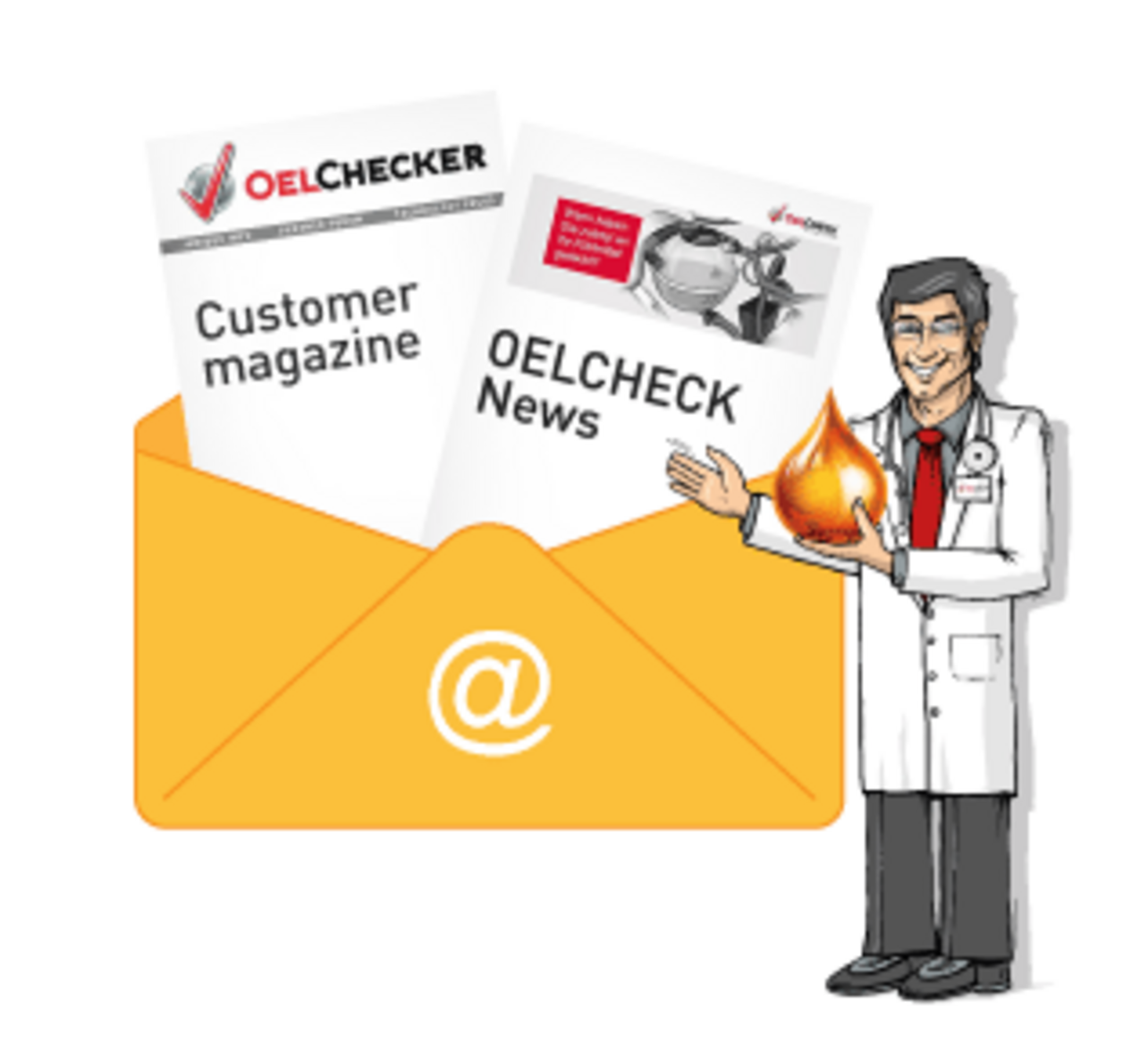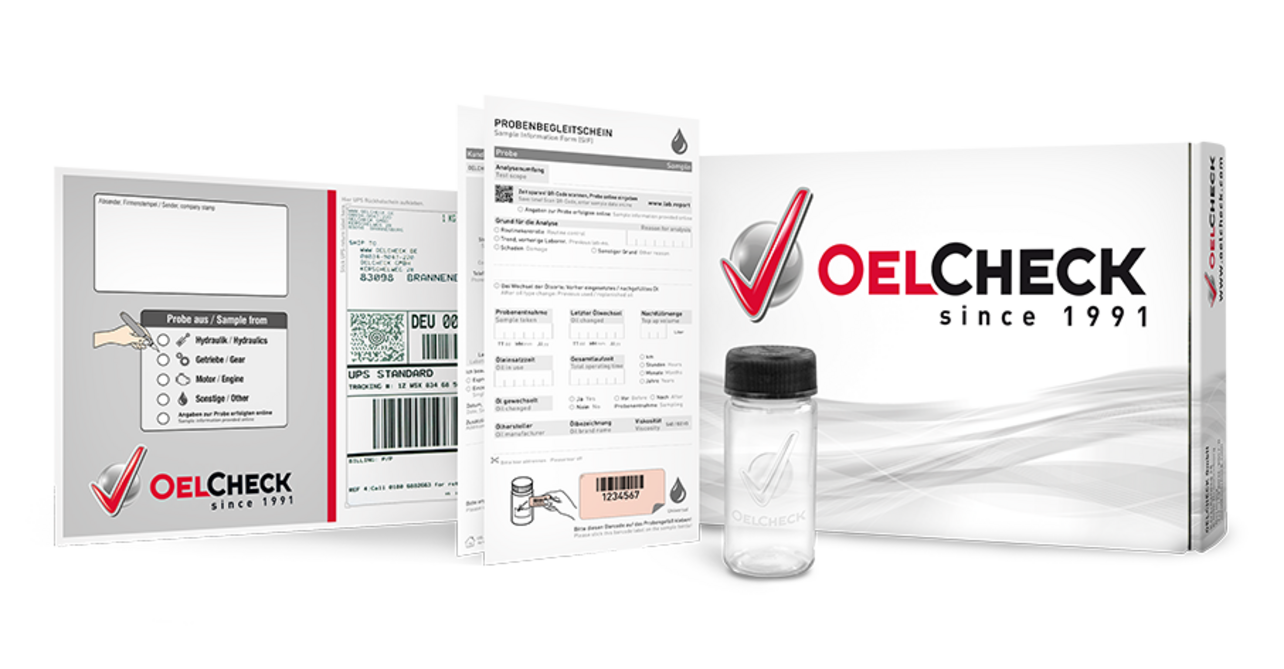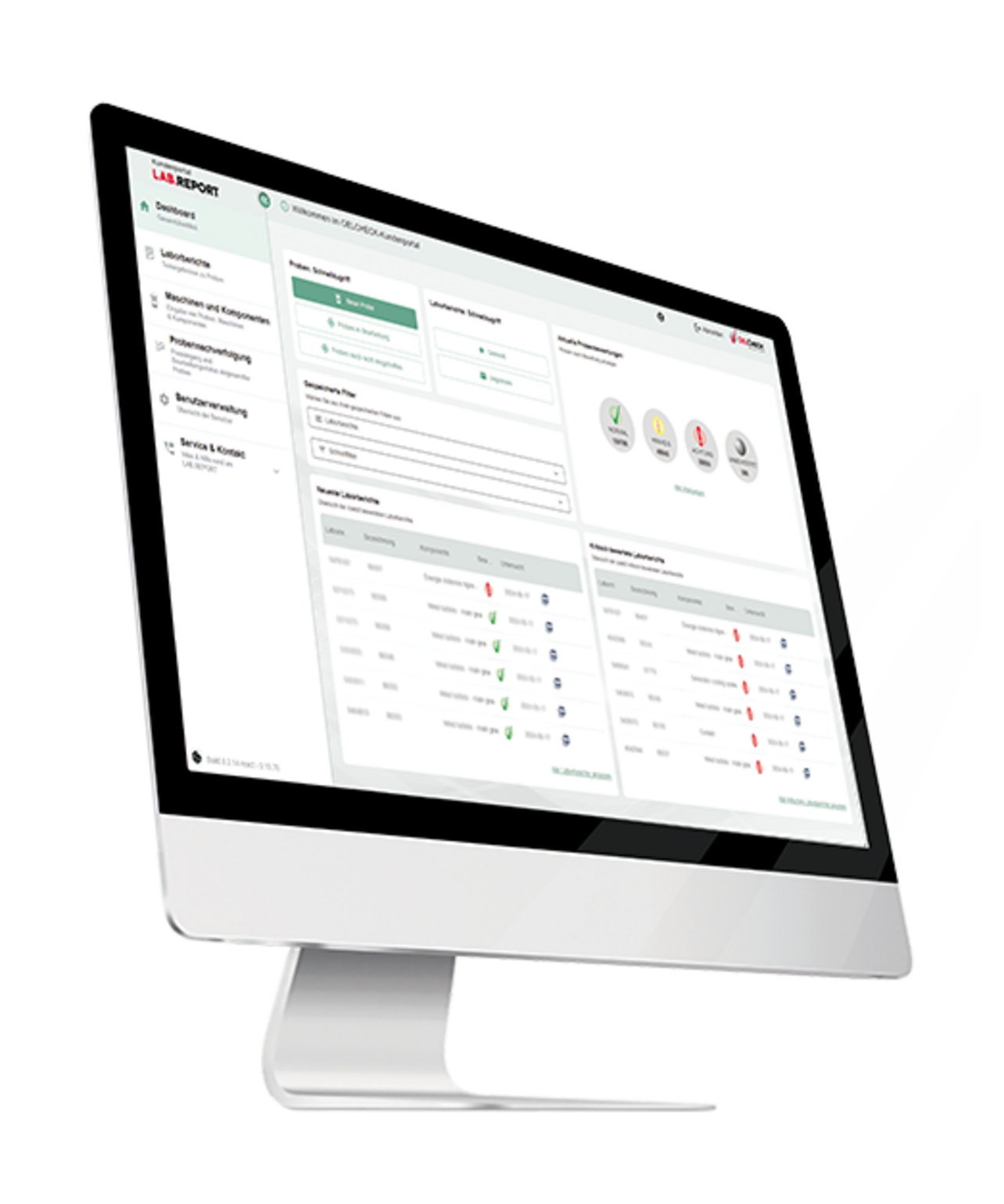From oil sample to analysis – how we ensure the highest quality
Year of publication: 2025
In the last OELCHECKER, you reported on the importance of taking an oil sample from the machine or system correctly. What happens when our oil samples reach the OELCHECK laboratory?

An ideal oil sample is representative of the “living” system. Only then can it reliably provide information about the oil condition, the content of wear particles and any contamination. The same applies to the way in which the sample is received and prepared before it is released for the upcoming laboratory tests.
Particularly important:
- The sample must not be contaminated and components must not be “lost”.
- The subsamples to be taken for the individual tests must be representative of the total volume submitted.
These requirements apply throughout the sample’s entire path through our laboratory – from receipt to the final measurement.
Structured process in the laboratory – from incoming inspection to analysis
The first step in the incoming inspection is to check that the sample container is undamaged. Customers' own containers are documented photographically. If there are any uncertainties about the desired scope of testing or if there are special questions, our OELCHECK tribologists are consulted – if necessary also in direct dialogue with the customer.
In the laboratory, the actual sample processing begins with homogenisation. Particles or water may have settled on the floor during transport. A specially designed automatic overhead shaker takes care of this task, processing up to 80 samples per cycle. With up to 2,000 samples per day, this would hardly be possible manually!
However, the main advantage of the machine process lies in standardisation: The samples are always homogenised according to defined parameters – an essential step for the reproducibility of the analysis results.
Quality assurance at the highest level
But homogenisation at the beginning is only the start. Before each individual test, our procedural instructions specify exactly how to re-homogenise and what sample quantity is to be taken. In automated processing, these processes are firmly integrated into the routines of our automatic filling machines or sample changers.
This precise process is complemented by our tightly meshed QA system: This includes internal test standards, regular monitoring of test equipment, regular calibration procedures and participation in interlaboratory tests.
Visit us – virtually or live!
Would you like to see our high quality standards for yourself? No problem! You can find a virtual laboratory tour on our website (www.oelcheck.de/labour).
Even better: Visit us in person – for example as part of a seminar at the OilDoc Academy or at the very special highlight, which only takes place every two years: The OilDoc Conference from 13 to 15 May 2025. You can look forward to over 400 participants, 70 excellent specialist presentations, workshops and discussions with recognised experts – and unique opportunities to expand your specialist knowledge and network.
OELCHECK also answers your questions on the topics of lubricant and fuel analyses as well as tribology.
Contact us by e-mail at info(at)oelcheck.de or by fax on +49 8034 9047 47.
OELCHECKER Spring 2025, page 10



